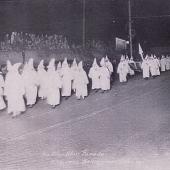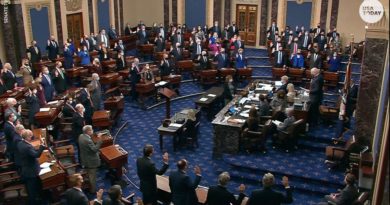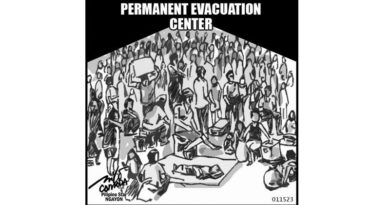POLITICS: The Language of White Supremacy
The Language of White Supremacy
Narrow definitions of the term actually help continue the work of the architects of the post-Jim Crow racial hierarchy.
VANN R. NEWKIRK II
The language of white supremacy has become increasingly central to understanding the argument over the broad currents of Donald Trump’s ascendancy. Long before ESPN anchor Jemele Hill famously referred to Trump as a white supremacist on Twitter, the questions of just who is a white supremacist, and just what white supremacy is, have dominated the analysis of how he came into power, and what that power means.
Hill’s comments came as part of the general response to an essay from my colleague Ta-Nehisi Coates, one in which Coates says that Trump’s “ideology is white supremacy, in all its truculent and sanctimonious power.” The bent of that essay is that whiteness—and in turn white supremacy—uniquely buoyed Trump’s candidacy, and that he has in turn openly wielded those energies to capture support and lead. Hill’s summation seemed to complete the square of that argument: “Donald Trump is a white supremacist who has largely surrounded himself with other white supremacists.” In this argument, white supremacy is framed as a broad concept, one where wielding racism or benefitting from it, even in its subtler forms, earns one the mark.
There are several shades of gray to those objections, but a column from Jonathan Chait in New York sums them up best. Chait does not agree with an expansive definition of white supremacy that would capture say David Duke, Steve Bannon, and Donald Trump, writing that “to flatten the language we use to describe different kinds of right-wing politics is to bludgeon our capacity to make vital distinctions.” Chait sees this labeling as a kind of language creep that in casting a wide net simultaneously cheapens some of America’s cherished institutions and in turn might tend to encourage radical acts against them.
This criticism of a broad definition of white supremacy isn’t new. Last November, Mother Jones’s Kevin Drum decried the “faddish term” wielded against members of the left and the right, and placed the genesis of that connotation with Coates himself. Jesse Singal, also of New York, and a frequent interlocutor of mine, tweeted yesterday expressing concern about the flexibility of the term as used by activists. “Don’t understand the utility of labeling a huge swath of things ‘white supremacist’ or ‘Nazi’ that simply aren’t,” Singal said. Our resultant conversation is threaded on Twitter and became the genesis of this essay.
To perhaps unfairly flatten these three arguments, which constitute the best of this school of objection, they tend to agree that the modern expansive definition of white supremacy is, well, modern. But that proposition is limited. The school of critical race theory, championed by scholars such as bell hooks, has been around in academic circles for at least 30 years, and its definition of white supremacy has long animated black activism. To quote scholar Frances Lee Ansley (taken here from a passage from David Gillborn, also, a critical-race-theory scholar):
“By ‘white supremacy’ I do not mean to allude only to the self-conscious racism of white supremacist hate groups. I refer instead to a political, economic and cultural system in which whites overwhelmingly control power and material resources, conscious and unconscious ideas of white superiority and entitlement are widespread, and relations of white dominance and non-white subordination are daily reenacted across a broad array of institutions and social settings.”
The provenance of that definition of white supremacy does not alone guarantee its usefulness, and 30 years is still relatively new in the academia-to-modern parlance frame. Also, as my colleague Conor Friedersdorf noted last November, the critical-race-theory definition could very well be “the vernacular of a tiny, insular subculture,” one which is contested and has not reached the level of consensus.
But the idea of critical-race-theory’s insularity is belied by its deep communion with widely-read titans of black intellectual thought. James Baldwin’s work did nothing if not tend towards the idea of “white supremacy” as a collective effort that went well beyond the work of self-avowed members of hate groups, and his 1980 essay in Esquire titled “Dark Days” crystalized that tendency. “To be white was to be forced to digest a delusion called white supremacy,” Baldwin wrote. In that essay, which itself was written in parallel with the nascence of critical race theory, Baldwin ties the very concept of whiteness to white supremacy.
Lest Baldwin be counted along with Frantz Fanon and Malcolm X as more radical “fringe” voices on the topic of white supremacy, the idea of white supremacy as a shared culture has been floated by many of the establishment voices of the civil-rights-movement, including none other than Martin Luther King, Jr. In his 1967 book Where Do We Go from Here: Chaos or Community?, which is itself concerned with hope and building interracial solidarity, King wrote that “the doctrine of white supremacy was imbedded in every textbook and preached in practically every pulpit. It became a structural part of the culture,” one that persisted to the present day.
“However much it is denied, however many excuses are made, the hard cold fact is that many white Americans oppose open housing because they unconsciously, and often consciously, feel that the Negro is innately inferior, impure, depraved and degenerate,” King wrote. “It is a contemporary expression of America’s long dalliance with racism and white supremacy.”
King saw that white supremacy was a structural pillar of America equally important to democracy itself. In that work, King also analyzed “white backlash” not as an insurgency responding to proximate political factors or politicians, but as a visceral, enduring autonomous response guided by white supremacy. In other words, King used “white supremacy” in a way that might have seen him scolded today, by many who do the scolding in his name.
The example of King is important, because a funhouse-mirror view of his philosophy tends to dominate the modern liberal view of race. King was famously conciliatory—in 1964 he refused to call Barry Goldwater “racist,” instead settling on saying the candidate “articulates a philosophy which gives aid and comfort to the racist,” a restraint that even many modern journalists might not have—but in his late life he often dealt with the effects of that conciliation, and with an advancing conspiracy that would eventually consume him. By the time of his death, the country had turned on King. And one major driver was a concerted effort among conservatives to take “white supremacy” and flip it on its head, and to gaslight black activism.
Chait mentions that subversion, noting that “political appeals to racism had to use some level of symbolic remove” after the civil-rights movement, but his treatment doesn’t quite do justice to the musculature of the effort. The repackaging of Jim Crow into a “race neutral” set of policies didn’t just arise as a wink-and-a-nod deal in southern political backrooms a few years near the end of the civil-rights movement, but was a half-century-long project forged by thousands of lawyers and mainstream political leaders that costs millions of dollars, and was played out in every arena across the country from the Supreme Court to town hall meetings.
A recent investigation in the New York Times Magazine by Nikole Hannah-Jones illustrates how this process took shape in the court room arms race over education after 1954’s Brown v. Board, but similar neutralization occurred in housing policy, public health, criminal justice, and voting rights. Richard Rothstein’s recent book The Color of Law in particular is a primer in the ways that even the least sophisticated white political actors moved away from explicitly racist and even subtly racist justifications for their laws to escape the scrutiny of watchful courts.
Correspondingly, as new policies intersected with public opinion and genuine policy victories won by the civil-rights movement, expressing racism became gauche, and then taboo. That taboo itself crystallized a self-conceptualization of whiteness as innately anti-racist. In turn, charges of racism themselves became epithets, and the mantle of white supremacy was relegated only to the ranks of those white folks foolish or ideological enough not to abide by the taboo. As both Chait and Drum implicitly outline in their work, now the only way to be identified as a white supremacist is to say you are one.
It goes without saying that this realignment almost exclusively benefitted white supremacists, who did not suddenly die with the passage of the Voting Rights Act. In no small bit of class warfare, whites who most often carried out direct violence in white supremacy’s name took the heat, giving space to the white men in suits who did their work quietly with litigation and city-planning maps. Those people of color who critiqued white supremacy were cemented as malcontents and agitators, themselves racists or “race-baiters” who sought to exploit white guilt to upend American racial harmony.
The development of critical race theory and its definition of white supremacy strike me as a reaction against that post-King status quo. The idea of “white privilege” came about not as a mid-aughts term for Tumblr teens, but during that reaction as a way to identify the latent benefits of white supremacy during a time when white liberals, moderates, and conservatives alike promoted a fiction of progress that denied their collective benefit from it, and to recover the language of responsibility lost in the mainstream with King’s death.
The media likewise should not be merely a mirror of consensus; rather it should challenge groupthink any time it runs up against truth. And if consensus is that white supremacy is a thing that only exists in the hate-group fringe, that claim should be held in skepticism against the reality that many of the racial outcomes—income gaps, housing and education segregation, police brutality, and incarceration—of the era of naked white supremacy persist, or have even worsened. And when it comes to Trump, or any other politician for that matter, the knee-jerk consensus reaction that a mainstream politician cannot possibly be a white supremacist should be balanced with the truth that many or most American politicians have been, and that they were voted in by real Americans, many of whom are alive, well, and voting today.
These demands are difficult to square in today’s polarized, litigious environment. But, to counter Chait, while a more expansive view of white supremacy in media’s contemplation of politics may seem to “flatten” political discourse, perhaps the difficulty here is facing the possibility that things might actually be flat. Politics might actually be trapped in the black box of white supremacy, and people very well might be on a historical treadmill, fighting the fights their parents fought, and maybe losing. If that version of reality is true, then the panic brought on by that flattened language might be justified.













